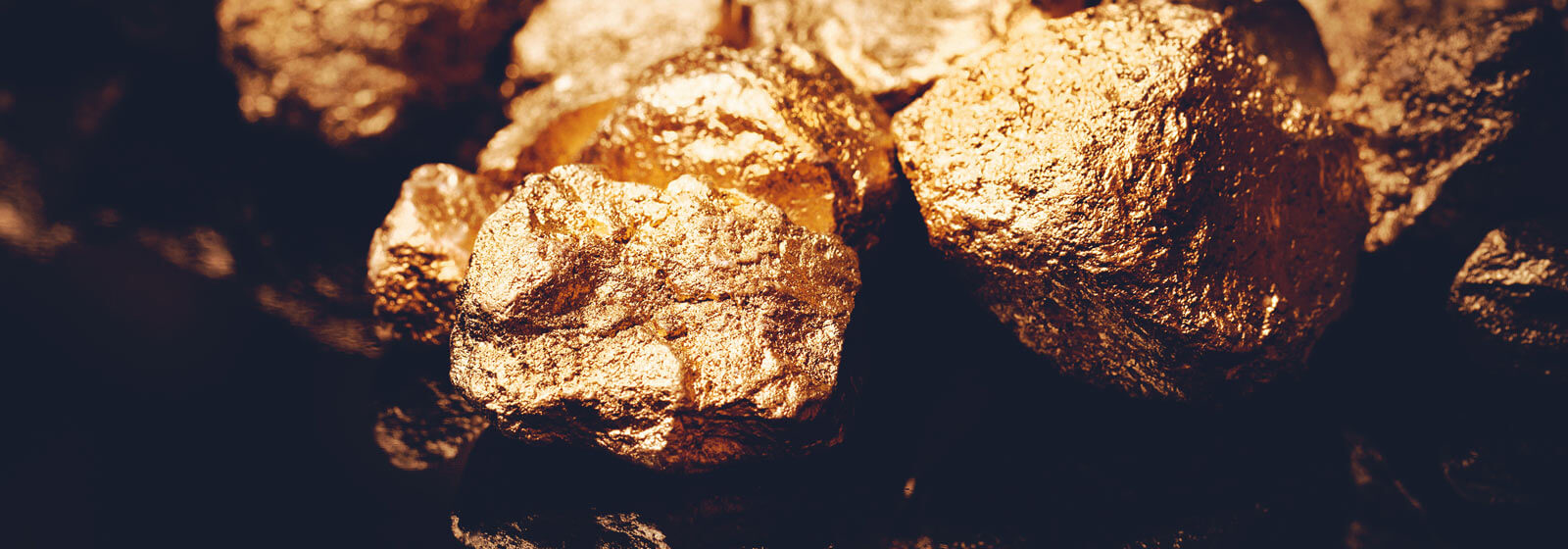How Rare are Precious Metals?
The best known precious metals are of course gold and silver, which have both been made into currency and objects of art since before recorded history began. However, the platinum group of elements (platinum itself, palladium, iridium, osmium, rhodium and ruthenium) are also important precious metals. Platinum and palladium have international currency codes assigned by ISO, just like gold and silver.
But what makes these metals special? Is it simply their rarity, beauty and utility?
What Makes a Metal Precious?
There are three areas which are often referenced when discussing precious metals:
1. It must be a naturally occurring metallic element
Gold, silver, platinum and even the unusual precious metals like osmium are all metals (in a chemical sense) and naturally occurring. Unstable elements that must be created in a lab (typically by fusing or irradiating other elements) can never count as precious metals.
2. It must be rare
The amounts of the metal found in the earth’s crust must be quite small. Copper, while traditionally used in coinage and jewellery, is far too common to count it as ‘precious’. Aluminium was once considered a precious metal because it was nearly impossible to refine. However, modern production techniques relegated it to the status of a common metal.
3. It must be valuable
A metal might pass both of the other tests, but if it isn’t desired by people, it does not count. Gold and silver are highly sought after both as currency, bullion and for making art, but are also vital to the electronics industry. Whilst some is used in jewellery, the majority of the palladium and platinum produced today is snapped up by automobile manufacturers, to produce catalytic converters.
A metal must have all three aspects to be precious, and even then some are more precious than others. You can get a good sense for how precious a metal is by comparing it to others on international markets.
The most expensive are at once very rare and very useful. Gold and platinum definitely count as contenders for the number one spot. Silver may be more useful industrially, but it is somewhat less rare, so less precious. Rhodium, iridium and ruthenium are perhaps the rarest, roughly 1/5 as common as platinum. However, the sale price of rhodium is typically a bit less than that of platinum, and the rest are even less expensive because they are simply less useful.
How Much Gold, Silver and Platinum Exists on Earth?
Here, we are only looking at the amount of these metals in the earth’s crust. We are unlikely to gather industrially or commercially useful amounts of material from the Earth’s much deeper mantle anytime soon, let alone from the molten core itself, so the huge volumes of these metals in those regions can be ignored.
The rarity of a metal is best expressed as its ‘mass fraction’, or how many kg can be expected to be found per billion kg of crust material. Of course, they are not evenly distributed or mining would be impossible, but the number is still useful.
Gold – 4 parts per billion
Silver – 75 parts per billion
Platinum – 5 parts per billion
Osmium – 1.5 parts per billion
Other Platinum group metals – 1 part per billion or less
As the earth’s crust is estimated to mass around 2.6 * 1022 kg, it means that there is around 400 billion kg of gold throughout the entire crust. Much of it will never really be accessible, of course, but there really is quite a bit out there.
How Much Gold has Been Mined so far, in Total?
Gold is commonly measured in troy ounces, so it is worth noting that 32.15 ounces equals one kg. The entire world production of gold is roughly 1.5 million kg per year, which would form a cube around 4.3 metres on each side.
Of course, gold has been mined for thousands of years, and records were not always kept so precisely as they are now. Experts estimate that some 10 billion troy ounces of gold have been produced in the history of humanity, or just over 311 million kg. That would be a cube roughly 25 metres on each side.
The largest ship ever built (the Seawise Giant, which was decommissioned in 2010 and was listed as having a cargo capacity of 657 million kg) could hold twice the amount of gold that the human race has ever produced, throughout all of history.
How Much Silver has Been Mined and how Much is Left?
Using the same estimates, there is roughly 7.5 trillion kg of silver throughout the earth’s crust. To date, some 1.4 billion kg of silver has been mined throughout human history. However, silver corrodes, and just under half of that silver no longer exists as a metal. Of what has been mined, only 777 million kg still exists.
How are Different Precious Metals Used?
1. Gold and Silver
Gold and silver are most famous for use as portable wealth. They are used by countries around the world both as common currency and as bullion. Coins of other precious metals do exist, but are rather rare.
They are also used in jewellery and objects of art in general. Gold has seen use in medicine (because it is harmless to the body), and both are vital to the electronics and tech industries.
2. Platinum Group Metals
Somewhere between half and 60% of the world’s total production of platinum and palladium goes to the automotive industry. Only a few grams are used in each vehicle, but the world builds a huge number of cars annually. As electric and hybrid vehicles become more common, less PGM’s are needed for catalytic converters, but more are needed for fuel cells and certain other types of electric power generation.
Iridium and ruthenium have a few technical and industrial uses, but are not produced in very high quantities. Osmium has three strikes against it, being toxic, difficult to work with and not even terribly useful.





